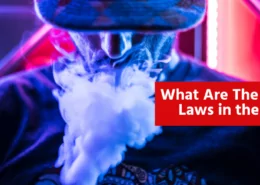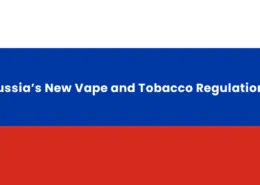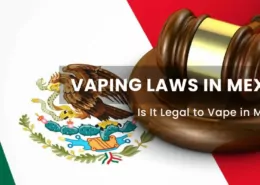Europe Vape Laws 2025: TPD & National Rules Guide
The regulation of vaping products across Europe presents a complex and often confusing picture for consumers, travelers, and businesses. While the European Union provides a baseline framework through its Tobacco Products Directive (TPD), individual nations – both EU members and non-members – have implemented a diverse array of national laws. This creates a patchwork of rules governing everything from product legality and sales restrictions to flavor availability, taxation, and where vaping is permitted. As of 2025, key trends include increasing restrictions on flavors and disposable devices, alongside a growing number of countries introducing specific excise taxes on vape products. This overview synthesizes the current state of vape regulations across Europe, drawing on official sources to provide clarity on this dynamic environment.
The Foundation: The EU’s Tobacco Products Directive (TPD)
Implemented in May 2016, the TPD (Directive 2014/40/EU, updated in 2025) establishes fundamental rules for e-cigarettes sold as consumer products within the EU, aiming to harmonize the internal market while ensuring health protection. Key TPD provisions impacting vaping include:
- Nicotine Limit: Maximum nicotine concentration capped at 20 mg/ml.
- Volume Restrictions: E-liquid refill containers limited to 10ml; e-cigarette tanks/cartridges limited to 2ml capacity.
- Safety & Quality: Requirements for child-resistant/tamper-evident packaging, leak-proof refilling mechanisms, high-purity ingredients, and consistent nicotine delivery.
- Labeling & Warnings: Mandatory health warnings (“This product contains nicotine…”) covering a significant portion of the packaging, ingredient lists, nicotine content information, and instructional leaflets. Promotional elements on packaging are banned.
- Advertising: Cross-border advertising and promotion of e-cigarettes are prohibited.
- Notification: Manufacturers/importers must notify authorities of products via the EU Common Entry Gate (EU-CEG) system before placing them on the market.
While the TPD sets minimum standards, it crucially allows individual EU member states to implement stricter national regulations. This flexibility is a primary reason for the significant variation observed across Europe.
Furthermore, the EU regulatory landscape continues to evolve. Discussions are ongoing regarding potential EU-wide taxation rules for vape products (possibly applying from 2026), further regulations on flavors and packaging (around 2027), and a revision of the TPD itself (TPD3, expected around 2027/2028). Additionally, an EU-wide regulation is set to ban disposable products with built-in, non-replaceable batteries (including many vapes) by February 2027 due to environmental concerns.

Country-by-Country Analysis of Vape Regulations:
Note: This analysis is based on the specific information provided in the source snippets. Regulations can change rapidly; always verify with official sources before making decisions.
Albania
Sale of vaping products is permitted in Albania, the regulations align with the EU Tobacco Products Directive (TPD). Packaging of vaping products requires an information sheet in Albanian, including health warnings. An excise tax of 10 leke per milliliter is levied on nicotine-containing e-liquids. Vaping is fully banned in public indoor areas, but generally allowed in most other public spaces, with courtesy advised when vaping indoors. This relatively less regulated market, with a low tax rate on nicotine products, may see future legislative action, particularly concerning the planned ban on nicotine e-cigarette sales, potentially driven by concerns about addiction and alignment with international trends.
Andorra
It is legal to purchase vaping products in Andorra, although no specific laws directly regulate their sale or use. The minimum age for purchasing and using vaping products is 18 years, and vaping products are available for sale within the country. Most of the Andorra regulations align with the TPD, but health warnings are not required on the packaging of vaping products. Andorra applies an excise tax on all tobacco products, which likely includes vaping products, with a rate of €2.7 per pack reported in 2020, and an increase in 2022. A general sales tax (IGI) of 4.5% is also applicable to all products. Vaping is partially banned in public places, with indoor vaping generally permitted in designated areas, although it is advised to ask beforehand. Vaping in public spaces is generally tolerated, but users are encouraged to be mindful of others.
Austria:
The vape regulations in Austria align with TPD, with a minimum age of 18 years for purchase. Austrian legislation regulates both nicotine-containing and nicotine-free e-cigarette products. Vaping is prohibited wherever smoking is banned, including public transport, indoor public spaces (restaurants, bars, cafes), health facilities, and schools/universities. Advertising and promotion of vaping products, especially those containing nicotine, are strictly regulated. Certain ingredients like caffeine and taurine are banned. Austria does not currently have a specific excise tax on vaping products; a 20% VAT applies, but the government plans to discuss the tax reform for e-cigarettes, which could bring in an estimated 100 million euros annually to the budget.
Belarus:
The sale and use of vaping products are legal in Belarus for individuals aged 18 and older. Vaping is prohibited in places where smoking is banned, including educational facilities and most public transport. Advertising of vaping products is strictly prohibited across all media platforms, except on manufacturers’ and importers’ websites. Sales of e-cigarettes and e-liquids are restricted to licensed businesses and prohibited via the internet (except for devices) and vending machines. The maximum nicotine concentration in e-liquids is 20 mg/ml. Product packaging must display one of two health warnings covering 50% of the front of the package. Excise tax is applied on e-liquids. Open display of e-cigarette liquids in shop windows is banned.
Belgium:
The sale and use of vaping products are legal in Belgium for those 18 and older. Vaping is banned in indoor public places, workplaces, and on public transport. Advertising and promotion are partially banned. The maximum nicotine concentration in e-liquids is 20 mg/ml, and refill containers cannot exceed 10 ml. Health warnings are required on packaging. An excise tax of €0.15/ml has been imposed on e-liquids since January 2024. Belgium became the first EU country to ban the sale of disposable vapes, citing health and environmental concerns, effective January 2025. The ban includes online sales and aims to protect young people.
Bosnia and Herzegovina:
There are no specific laws in Bosnia and Herzegovina directly addressing the use of e-cigarettes or vaping. The legal age for purchasing vaping products is not specified. While there’s no explicit ban on vaping, it’s generally advised to avoid vaping in enclosed public spaces and on public transport, aligning with smoking restrictions. Advertising, promotion, and sponsorship of tobacco products, e-cigarettes, and heated tobacco products are prohibited since the Tobacco Act came into force in 2023. There are no specific regulations on nicotine content or flavors. Health warnings are required on both devices and e-liquid packages. Excise tax is applied on e-liquids. The Federation of Bosnia and Herzegovina adopted a new law in 2023 inspired by the EU Tobacco Products Directive, which regulates e-cigarettes.
Bulgaria:
While vaping is currently legal in Bulgaria for those 18 and older, the country initially voted for a complete ban on the import, trade, marketing, and sale of all vaping products (including nicotine-free) by 2025. This decision has since been reconsidered, with discussions now focusing on a ban only on disposable vapes. Bulgaria adheres to the TPD regulations, including a maximum nicotine strength of 20mg/ml and restrictions on advertising and promotion. Vaping is generally permitted in outdoor public spaces but prohibited in enclosed public spaces such as healthcare and educational facilities, and public transport. An excise tax is applied to e-liquids, with progressive increases planned. Health warnings are required on packaging. The evolving regulatory landscape in Bulgaria reflects a strong concern about youth vaping and the potential for illicit trade.
Croatia:
Vaping is legal in Croatia for individuals 18 years of age and older. The country follows the EU Tobacco Products Directive (TPD) regulations. Vaping is prohibited in indoor public places wherever smoking is banned. Advertising of e-cigarettes is banned in all media, and sales via vending machines are also prohibited. The maximum nicotine content in e-liquids is 20 mg/ml, and there are restrictions on tank and bottle sizes. Health warnings are required on packaging. Currently, there is no excise tax on e-liquids in Croatia; a 25% VAT applies. Croatia is considering new legislation to further restrict tobacco and related product use.
Cyprus:
The sale and use of vaping products are legal in Cyprus for individuals aged 18 and over. Cyprus adheres to the EU Tobacco Products Directive (TPD). Vaping is prohibited in all enclosed public spaces and in private vehicles where a minor under 18 or a pregnant woman is present. Advertising and promotion of vaping products are heavily restricted, and sales are limited to licensed vape shops. The maximum nicotine content in e-liquids is 20 mg/ml, and restrictions apply to tank and bottle sizes. Health warnings are mandatory on packaging. An excise tax of €0.12 per milliliter is levied on all e-liquids. Violations of vaping regulations can result in fines up to €850.
Czechia:
Vaping is legal in Czechia for those 18 and older, and the country largely aligns with the EU Tobacco Products Directive (TPD) . Vaping is prohibited in hospitals, schools, shopping centers, and public transport, as well as in cars carrying children under 18. The Ministry of Health is planning to ban all flavored vapes except tobacco. Czechia implemented an excise tax on e-liquids in January 2024, with a progressive increase planned until it reaches CZK 10 (€0.41)/ml by 2027. Retailers are required to register with the Ministry of Health. Nicotine-free liquids are also subject to TPD regulations.
Denmark:
Vaping is legal in Denmark for individuals aged 18 and over. The country allows some specific flavors in e-liquids, with tobacco and sometimes mint being exceptions in flavor bans in some EU countries. Denmark applies a tax on e-liquids, with the rate varying based on the nicotine content (zero-nicotine exempt). Vaping is restricted in certain public places, including public transport and schools. The legal framework aligns with the EU Tobacco Products Directive (TPD).
Estonia:
Vaping is legal in Estonia for those 18 and older, and the regulations align with the EU Tobacco Products Directive (TPD). Similar to Denmark, Estonia permits some specific flavors in e-liquids, with tobacco and sometimes mint being exceptions to flavor bans in other EU countries. Estonia imposes a tax on e-liquids. Vaping is restricted in certain public places.
Finland:
Vaping is legal in Finland for individuals 18 years and older. Finland has implemented a ban on all flavors in e-liquids, with the exception of tobacco flavors. The country applies a tax on e-liquids. Health warnings are required on e-liquid packages only. There is a full ban on advertising of vaping products. The regulations are in line with the EU Tobacco Products Directive (TPD) .
France:
France maintains a generally accepting stance toward vaping while adhering to EU TPD standards. Following Belgium’s lead, France has enacted a ban on all disposable vaping devices effective June 2025. The French Ministry of Health estimates this measure will prevent approximately 1.2 million single-use devices from entering landfills monthly while addressing the 43% increase in youth vaping observed between 2023-2024. The French government plans to implement a substantial 38% tax increase on e-liquids, which would add a flat-rate tax of €0.15 per milliliter of e-liquid, regardless of whether it contains nicotine.
Georgia:
The sale and use of vaping products are legal in Georgia for individuals 21 years of age and older. Vaping is prohibited in places where smoking is banned, including educational facilities. There are restrictions on advertising and promotion of vaping products. An excise tax is levied on vaping products, with rates varying based on whether the system is closed or open. Packaging of vaping products must include an information sheet with warnings. The legal framework is established by the Law No. 4059-RS on Tobacco Control (as amended).
Germany:
Germany has established a sophisticated regulatory framework for vaping products, Key elements of Germany’s vaping regulations include:
- Strict enforcement of the minimum age requirement of 18 years for purchasing and using vaping products
- Rigorous age verification requirements for both physical and online retailers
- Restriction of sales to licensed establishments including specialized vape shops and select retail outlets
- Detailed advertising restrictions prohibiting marketing that targets minors or suggests health benefits
- Prohibition of television and radio advertisements for vaping products
Germany permits online sales of vaping products but requires robust age verification systems and adherence to the same safety and packaging standards as physical retail locations.
Greece:
Vaping is legal in Greece for individuals aged 18 and over. The country adheres to the EU Tobacco Products Directive (TPD). There is a full ban on the use of e-cigarettes in public indoor areas. Advertising and promotion of vaping products are partially banned. Greece imposes a tax on all e-liquids.
Hungary:
Vaping is legal in Hungary for individuals 18 years and older. Hungary has implemented a ban on all flavors in e-liquids, with the exception of tobacco and sometimes mint flavors. The country applies a tax on e-liquids.
Iceland:
Vaping is legal in Iceland for individuals 18 years and older. The nicotine content in e-liquids is limited to 2% (20 mg/ml). Advertising of vaping products is allowed. Vaping is prohibited in public transport, schools, and health centers. A tax is applied to vaping products. Plain packaging is required.
Ireland:
Vaping is legal in Ireland for individuals 18 years and older. The sale of vaping products to those under 18 is prohibited. A ban on disposable vapes is proposed. Advertising of e-cigarettes and related products is restricted, especially in media that may appeal to young people, and prohibited near schools and in cinemas. The maximum nicotine strength for e-liquids is capped at 20mg/ml. A ban on flavored vapes is envisaged. Health warnings are required on packaging. An excise tax of €0.50 per ml of e-liquid will commence in mid-2025. While there’s no national law banning vaping in public places, many establishments have their own policies prohibiting it, including public transport. The Irish government secured approval in September 2024 to draft new restrictions on the sale of vapes, including on packaging, proxy sales, flavors, and point-of-sale displays.
Italy:
Vaping is legal in Italy for individuals 18 years and older. Italy abides by the EU Tobacco Products Directive (TPD). Vaping is banned in indoor public places and workplaces such as schools, hospitals, restaurants, and public transport. The ban on smoking in open-air places in the presence of minors and pregnant women will be extended to vaping. Online sales of e-cigarette products containing nicotine are banned from January 1, 2025. The maximum nicotine content in e-liquids is 20 mg/ml. Health warnings are mandatory on all products. Italy has a levy tax on e-liquids, which has been increasing year on year since 2021. As of January 1, 2025, the tax on nicotine e-liquids will increase by 1%, and similar increases will affect nicotine-free e-liquids and flavors.
Kazakhstan:
The sale, distribution, import, and manufacture of e-cigarettes, including e-liquids and devices, are banned in Kazakhstan, effective June 2024. The use of e-cigarettes will be prohibited from July 2025. Prior to the ban, the minimum age for sale was 21. Vaping was prohibited in healthcare and educational facilities, cultural centers, taxis, and airplanes, but allowed in designated areas elsewhere. Advertising was banned. The maximum nicotine content was 20 mg/ml. A tax was applied to nicotine-containing e-liquids.
Kyrgyzstan:
The import, circulation, and use of electronic cigarettes will be banned in Kyrgyzstan from July 2025. Prior to the ban, the minimum age for sale was 18. Vaping was prohibited in indoor public places, workplaces, and public transport (except designated airport smoking rooms). Advertising and promotion were banned. The maximum nicotine concentration was 20 mg/ml. Text and pictorial health warnings were required on 65% of packaging. A tax was levied on nicotine-containing e-liquids.
Latvia:
Vaping is legal in Latvia for individuals aged 18 and over. Flavors in e-liquids are banned, with the exception of tobacco flavor. Latvia applies a tax on e-liquids, which is scheduled to increase.
Lithuania:
Vaping is legal in Lithuania for individuals 18 years and older. All flavors in e-liquids are banned. Lithuania imposes a tax on e-liquids.
Luxembourg:
Vaping is legal in Luxembourg for individuals 18 years and older. Vaping is prohibited wherever smoking is banned, including public places where children are present, public buildings, public transport, and vehicles with children under 12. Advertising of e-cigarettes is banned everywhere except at the point of sale, and cross-border sales are illegal. There is no specific vape tax currently, but a tax on e-liquids and nicotine pouches is planned for October 2024. Luxembourg has no plans to ban disposable vapes.
Malta:
Vaping is legal in Malta for individuals 18 years and older. Vaping is prohibited in all public places except designated smoking areas in casinos and certain hotel rooms, on public transport, and in private vehicles with minors under 16. Most forms of e-cigarette advertising and promotion are prohibited. The nicotine content in e-liquids must not exceed 20 mg/ml. Health warnings are required on packaging. An excise duty of €0.13 per milliliter on all e-liquids (nicotine or not) took effect on January 1, 2025.
Monaco:
There are no specific laws regarding e-cigarettes in Monaco. The standard VAT rate of 20% applies, similar to France. The government is considering a ban on disposable e-cigarettes. Smoking and vaping are banned on beaches.
Montenegro:
Vaping is legal in Montenegro, although the minimum age is not specified in the snippets. All flavors in e-liquids are banned. An excise tax is applied to e-liquids.
Netherlands
Vaping is legal in the Netherlands for individuals 18 years and older. The Netherlands abides by the EU Tobacco Products Directive (TPD). Online sales are prohibited since July 2023. Advertising of e-cigarettes and e-liquids is prohibited, except in specialist shops. The legal age for purchasing is 18, but there’s a proposal to raise it to 21. The sale of all e-liquid flavors other than tobacco is prohibited. Health warnings are required on packaging. Currently, there is no excise tax on e-cigarettes , but a tax is planned for 2025. Unlike smoking, there are currently no legal restrictions on public vaping, but this is due to change, with vaping being banned in non-smoking areas, although consultations are still in progress. Vaping is not permitted in restaurants, but some outdoor seating areas may allow it. Some cafes and coffee shops may permit vaping inside, but it’s best to check with staff. Vaping is mostly prohibited in enclosed public spaces, but some independently owned spaces may allow it (check for signage). Vaping is not allowed on any form of public transport. The Dutch government aims for a smoke-free generation by 2040 and is tightening regulations on vaping to protect young people.
North Macedonia:
Vaping is legal in North Macedonia, with the minimum age likely 18+ based on EU influence. Vaping is allowed wherever smoking is permitted. Advertising and promotion are restricted. The nicotine content is likely limited to 20 mg/ml due to EU influence. Health warnings are required on packaging. An excise tax is levied on e-liquids.
Norway:
The sale of electronic nicotine delivery systems (ENDS) is banned in Norway. However, the use of vapes is allowed.
Poland:
Vaping is legal in Poland for individuals 18 years and older. Vaping is prohibited in public places where smoking is banned. Online sales of vaping products are prohibited. A ban on disposable e-cigarettes is planned for the third quarter of 2025. Flavored e-liquids other than tobacco are banned. Excise tax on e-liquids is increasing significantly. The sale of nicotine pouches to those under 18 is prohibited, with potential for a full ban.
Portugal:
Vaping is legal in Portugal for individuals 18 years and older. Vaping is treated similarly to smoking and is banned in many public places, including enclosed spaces and public transport. Online sales of nicotine-containing products are banned. The nicotine content in e-liquids is limited to 20 mg/ml. Health warnings are required on packaging. Excise tax is applied to e-liquids, with tiered rates for nicotine-containing and nicotine-free products.
Republic of Moldova:
Vaping is legal in the Republic of Moldova for individuals 18 years and older. Vaping is banned in all enclosed and semi-enclosed public places and on public transport. Advertising and promotion of vaping products are banned. Online sales are prohibited. The nicotine content in e-liquids must not exceed 20 mg/mL. Health warnings are required on packaging. A 15% increase in the consumption tax on disposable e-cigarettes has been proposed.
Romania:
Vaping is legal in Romania for individuals 18 years and older. Vaping is banned only on public transport. There is a near-total ban on advertising of vaping products. Cross-border sales of e-liquids are prohibited. The nicotine content in e-liquids must not exceed 20 mg/mL. Health warnings are required on packaging. An excise tax is applied to e-liquids. The sale of vaping products to minors is prohibited.
Russian Federation:
Vaping is legal in the Russian Federation for individuals 18 years and older. There is a comprehensive ban on the use of e-cigarettes in indoor workplaces and indoor public places, as well as on all public transportation (except long-distance passenger ships in designated areas). All forms of advertising, promotion, and sponsorship of e-cigarettes are prohibited, and the display of vaping products at the point of sale is banned. Online sales of vaping products are also prohibited. The maximum nicotine content in e-liquids is 20 mg/ml. An excise tax is levied on e-liquids, with the rate increasing annually. A proposal for a total ban on vaping devices and associated products is under consideration. A minimum selling price system for nicotine-containing products is in place.
San Marino:
Vaping is legal in San Marino, with the minimum age for sale being 18 years. Vaping is permitted wherever smoking is allowed. The nicotine content in e-liquids is likely limited to 20 mg/ml due to the importation of products primarily from the EU. There is no specific vape tax mentioned; the standard VAT rate is 20%. Health warnings are required on devices only. San Marino has not adopted the EU Tobacco Products Directive (TPD), but many EU regulations are complied with due to the origin of most vaping supplies.
Serbia:
Vaping is legal in Serbia, although the minimum age for sale is not specified in the snippets. Vaping is allowed wherever smoking is permitted. There are minimal restrictions on where vaping is allowed. No specific vape tax is mentioned; the standard VAT rate is 20%.
Slovakia:
Vaping is legal in Slovakia for individuals 18 years and older. Currently, there is no specific excise tax on vaping products; a 20% VAT applies.
Slovenia:
Vaping is legal in Slovenia for individuals 18 years and older. Flavors in e-liquids are banned, with the exception of tobacco flavor. Slovenia applies a tax on e-liquids. Vaping is banned in places where smoking is prohibited, including public transport and cars containing children.
Spain
Vaping is legal in Spain for individuals 18 years and older. Spain’s regulations largely follow the European Union’s guidelines. Vaping is prohibited in public indoor spaces such as restaurants, bars, and public transport. However, it is generally allowed outdoors, except near hospitals, schools, or children’s playgrounds. Vaping is increasingly restricted on beaches, with potential fines for violations. The legal age to purchase and use vapes is 18. The nicotine content in e-liquids is limited to 20 mg/ml. A ban on flavored vapes (except tobacco and possibly menthol) and disposable vapes is planned for 2025. Stricter labeling requirements for nicotine-free vapes are also planned. There is no specific vape tax currently , but one is planned for 2025. Vaping is only permitted in designated smoking areas within airports.
Sweden:
Vaping is legal in Sweden for individuals 18 years and older. Sweden applies a tax on e-liquids, with the rate tiered based on the nicotine strength.
Switzerland:
Vaping is legal in Switzerland, although the minimum age for sale is not specified in the snippets (likely 18+). There is no specific excise tax on vaping products; the standard VAT rate is 7.7%.
Tajikistan:
The sale of electronic nicotine delivery systems (ENDS) is banned in Tajikistan.
Turkey:
The sale of all types of vaping products is banned in Turkey. However, the use of personal vaping devices and e-liquids brought into the country is allowed. The minimum age for vaping is 19+. Vaping is prohibited indoors and on public transport.
Turkmenistan:
The sale of electronic nicotine delivery systems (ENDS) and electronic non-nicotine delivery systems (ENNDS) is banned in Turkmenistan.
Ukraine:
The sale of vaping products is allowed in Ukraine. There is a full ban on the use of e-cigarettes in public indoor areas. A full ban on advertising of vaping products is also in place. Some specific flavors are banned. Ukraine applies an excise tax on vaping products.
United Kingdom
Vaping is legal in the UK for individuals 18 years and older. The sale of nicotine vaping products to anyone under 18 is illegal. Disposable vapes will be banned from June 1, 2025. Advertising of e-cigarettes is restricted across various media. The maximum nicotine concentration in e-liquids is 20mg/ml. New laws will restrict how vapes are marketed to prevent appealing to younger audiences, including a ban on colorful or child-friendly packaging and removal from prominent displays. The Tobacco and Vapes Bill proposes to extend current age restrictions for selling nicotine-containing vapes to also include non-nicotine containing vapes, making it illegal to sell or provide any vaping product to individuals under 18 from January 1, 2027. The Bill also aims to prohibit the advertising and sponsorship of vapes and other nicotine products and to limit the appeal of both nicotine and non-nicotine vapes to children by regulating their flavors, descriptions, packaging, and point-of-sale displays. Vaping in enclosed public spaces is subject to local laws, similar to smoking regulations, meaning it’s often prohibited indoors. There is no universal ban on vaping in hospitality settings, but most major chains prohibit it indoors. Vaping is generally prohibited on public transport.
Uzbekistan:
There is a partial ban on the use of e-cigarettes in public indoor areas in Uzbekistan. Advertising of vaping products is partially banned. The minimum age for the sale of vaping products is 18 years.
National Regulations: Key Areas of Variation Across Europe
Beyond the TPD baseline, national laws differ substantially. Here’s a thematic look at key areas:
Legality, Sales Channels, and Age Limits
While most European countries permit the sale and use of vaping products, some have outright bans. Norway and Turkey, for instance, ban the sale of nicotine-containing e-cigarettes (though Turkey allows personal use of imported items). Kazakhstan implemented a full ban on sale, import, distribution, and manufacture effective June 2024, with a use ban planned for July 2025. Kyrgyzstan has a similar comprehensive ban scheduled for July 2025. Tajikistan and Turkmenistan also ban the sale of ENDS/ENNDS.
Where sales are legal, the minimum purchase age is overwhelmingly 18 years old, aligning with the TPD. Some non-EU countries may vary (e.g., Georgia reported as 21).
Restrictions on sales channels are common. Online sales of vaping products (especially nicotine-containing) are prohibited in several countries, including Austria, Poland, Portugal, Republic of Moldova, and Russia. Some countries, like Cyprus, limit sales to licensed vape shops. Belarus prohibits internet sales of e-liquids but allows device sales online.
Nicotine Limits and the Flavor Debate
The TPD’s 20mg/ml nicotine cap is widely adopted across the EU and often mirrored by non-EU European nations (e.g., Albania, Iceland, Israel, Moldova, Russia).
However, flavor regulations represent a major point of divergence:
- Strict Flavor Bans: Several countries have banned all e-liquid flavors except tobacco. Examples include Finland, Hungary, Lithuania, and Slovenia. Poland also bans flavors other than tobacco. Ukraine bans some specific flavors.
- Partial Flavor Allowances: Some EU countries implementing flavor restrictions may carve out exceptions, typically for tobacco and sometimes menthol/mint flavors (Denmark and Estonia might fall into this category based on general trends, though specifics require verification).
- Upcoming Flavor Bans: Czechia has plans to ban all flavors except tobacco.
- No Widespread Flavor Bans (Currently): Many countries, including Albania, Andorra, Austria, Belgium, Croatia, Cyprus, Georgia, Greece, Iceland, Israel, Italy, Luxembourg, Malta, North Macedonia, Portugal, Romania, San Marino, Serbia, Slovakia, Sweden, Switzerland, do not currently have national bans covering all non-tobacco flavors, although local or future restrictions are always possible. Montenegro is listed as having a ban on all flavors, which seems exceptionally strict and warrants verification against official sources.
The intense debate around flavors stems from balancing concerns about youth appeal against the potential role of flavors in helping adult smokers switch from combustible cigarettes.
Where Can You Vape? Public Use Rules
Restrictions on vaping in public places are common throughout Europe, generally mirroring smoking bans:
- Indoor Public Spaces & Transport: Vaping is widely prohibited in enclosed public spaces (restaurants, shops, offices, hospitals, schools) and on public transport (trains, buses) in most countries (e.g., Albania, Austria, Belgium, Bosnia & Herzegovina, Bulgaria, Croatia, Cyprus, Finland, Greece, Hungary, Iceland, Israel, Italy, Lithuania, Luxembourg, Malta, Moldova, Norway, Poland, Portugal, Romania, Russia, Slovenia, Spain, Turkey, Ukraine).
- Outdoor Restrictions: Rules for outdoor public spaces vary significantly. Some countries/cities ban vaping in parks, beaches, or near building entrances (e.g., Spain, France). Others, like Serbia, are noted as having minimal restrictions on where vaping is allowed. Luxembourg prohibits vaping where children are present.
- Workplaces: Bans often extend to indoor workplaces, and sometimes even outdoor areas on workplace premises.
- Vehicles: Some countries, like Cyprus and Malta, ban vaping in private vehicles when minors are present.
Travelers should always look for local signage and assume vaping is restricted in public unless a designated smoking/vaping area is clearly marked.
The Rise of Vape Taxes
A growing number of European countries are implementing specific excise taxes on vaping products, particularly e-liquids, moving beyond standard VAT. This trend reflects a governmental view of vapes as “sin goods” similar to tobacco or alcohol, and a potential revenue source. However, the approach and rates vary widely:
- Volume-Based Tax (€/ml): This is common. Examples include Albania (10 leke/ml), Belgium (€0.15/ml), Cyprus (€0.12/ml), Czechia (progressive rate up to €0.41/ml by 2027), Estonia, Greece, Hungary, Italy, Latvia (increasing rate), Lithuania, Malta (€0.13/ml), Montenegro, North Macedonia, Poland (increasing rate), Portugal (tiered rates for nicotine/nicotine-free), Romania. Russia also applies an increasing rate.
- Nicotine-Based Tax: Sweden applies a tax tiered by nicotine strength. Denmark also taxes based on nicotine content (zero-nicotine exempt).
- No Specific Vape Excise Tax (Currently): Some countries, like Austria, Croatia, Luxembourg (tax planned Oct 2024), Slovakia, Slovenia (tax applied, but detail limited), Switzerland, San Marino, Serbia, do not currently appear to have a distinct national excise tax on vape liquids beyond standard VAT, although this can change rapidly.
The EU is actively considering harmonized taxation rules for vaping products across the bloc, potentially starting from 2026.
Crackdown on Disposables
Driven by environmental concerns (battery waste, plastic) and worries about youth appeal due to their ease of use and low initial cost, disposable vapes are facing increasing regulatory pressure:
- Bans Enacted/Confirmed: Belgium enacted a ban effective January 2025.
- Bans Planned/Considered: France, Ireland, Poland (Q3 2025 plan), and the UK (June 2025 plan) are among countries actively moving towards banning disposable vape sales. Monaco is also considering a ban.
- EU-Level Action: An EU regulation banning products with non-replaceable built-in batteries is expected by February 2027, which would cover most current disposable vape designs as well as some integrated battery mods.
Advertising and Packaging Rules
The TPD sets baseline rules (health warnings, no promotional elements), but national laws often go further:
- Advertising Bans: Many countries have near-total or full bans on vape advertising across most media platforms (e.g., Finland, Russia, Ukraine, Belarus, Bosnia & Herzegovina, Croatia, Iceland, Israel, Moldova, Romania). Others have partial bans (e.g., Andorra, Greece). Austria heavily restricts advertising. Luxembourg bans ads except at point of sale. Russia bans product display at point of sale.
- Packaging: Most countries require TPD-compliant health warnings. Some non-EU countries adopt similar standards (Albania, Bosnia & Herzegovina, Georgia, Moldova, North Macedonia). Iceland and Israel mandate plain packaging.
Navigating the Complexity: Key Trends and Conclusion
The European vaping regulatory landscape is clearly fragmented but shows converging trends towards stricter control. Concerns over youth uptake are driving widespread action on flavors (with bans becoming more common) and disposable products. Environmental considerations are also fueling the push against disposables. The implementation of excise taxes is another clear trend, treating vape products increasingly like traditional tobacco from a fiscal perspective.
While the EU’s TPD provides a foundation, the significant variations in national laws regarding flavors, public use, online sales, taxation, and disposables create a complex operating environment for businesses and require consumers and travelers to be diligent in understanding local rules. The ongoing discussions at the EU level regarding TPD3, taxation, and battery regulations suggest further harmonization and potentially stricter rules are likely in the coming years.
For businesses, navigating this requires constant monitoring of both EU directives and national legislation. For consumers and travelers, understanding local restrictions on purchase, import (if traveling from outside the region), public use, and available product types (especially flavors) is essential to ensure compliance and avoid penalties. Staying informed through official government sources and reputable health organizations remains paramount in this rapidly evolving regulatory field.
- Europe Vape Laws 2025: TPD & National Rules Guide - April 15, 2025
- UK Smoking Ban Could Shut 7,700 Shops, Eliminating 70,000 Jobs - April 15, 2025
- Maldives Implements Generational Tobacco Ban - April 15, 2025








